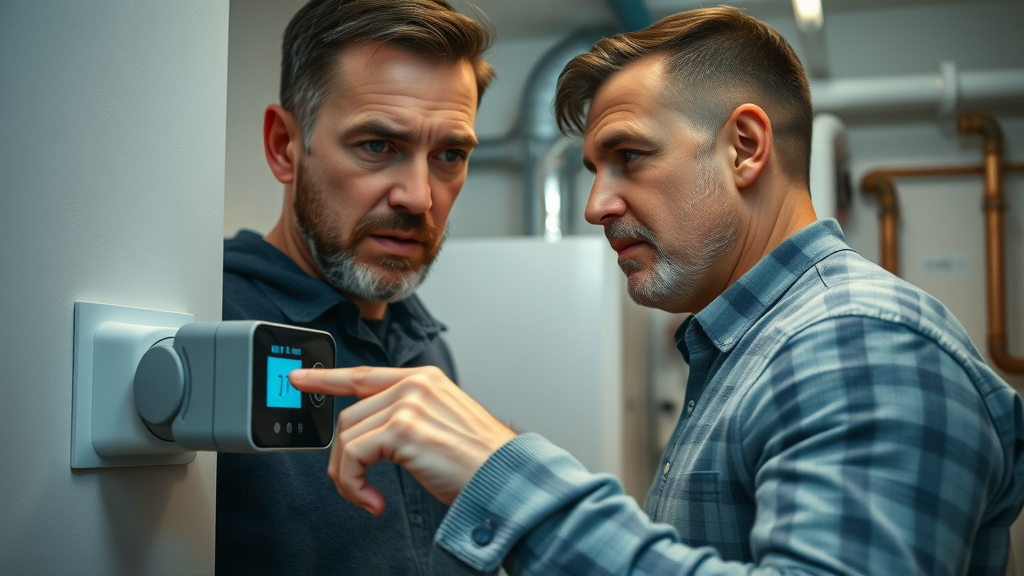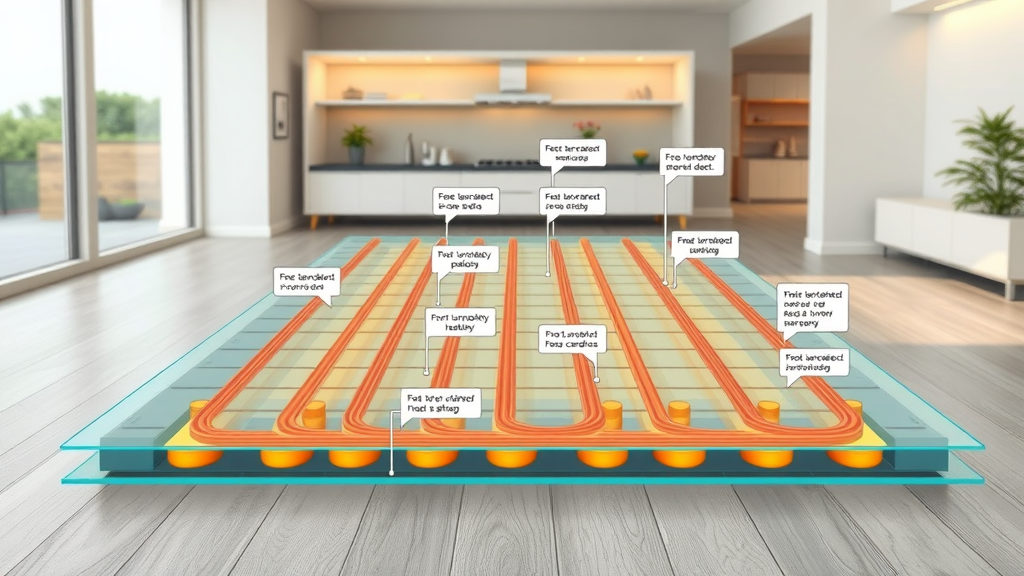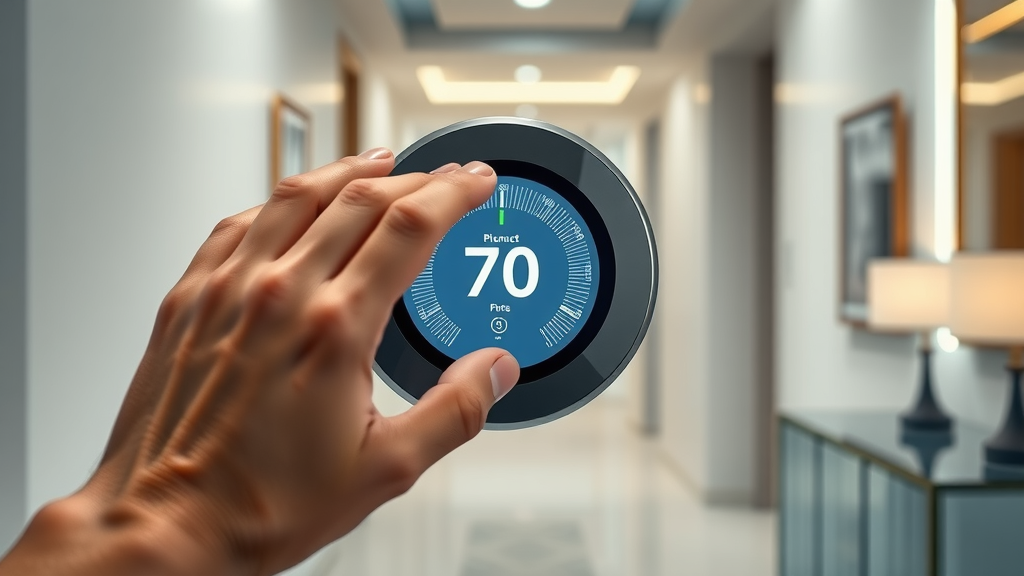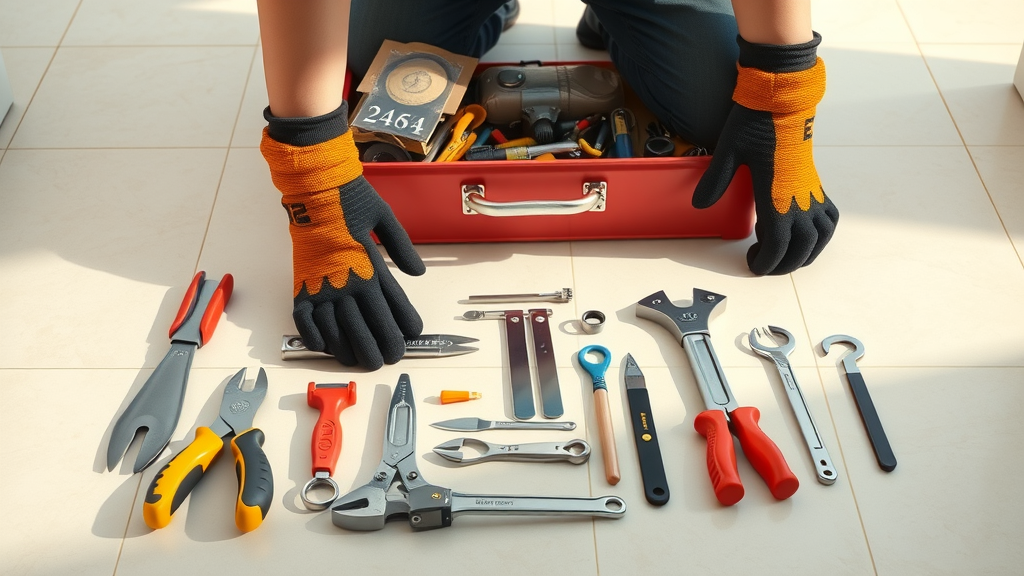Did you know that up to 70% of unexpected underfloor heating repairs could be avoided with regular maintenance? Neglecting simple floor heating upkeep doesn’t just put your comfort at risk—it can cost you thousands in emergency repairs and spike your energy bills. In this comprehensive guide, you’ll unlock proven underfloor heating maintenance strategies that keep your system running smoothly, save you money, and ensure cozy floors year-round. Read on to discover essential steps every homeowner should take.
Shocking Facts About Underfloor Heating Maintenance Every Homeowner Should Know
"Up to 70% of unexpected underfloor heating repairs could be avoided with regular maintenance and early detection of minor issues."
The Hidden Costs of Neglecting Floor Heating System Upkeep
- Increased energy bills
- Risk of major floor heating system breakdowns
- Reduced efficiency and comfort

When underfloor heating maintenance is overlooked, homeowners often face hidden expenses. A lack of regular maintenance can silently drive up your energy costs, as your floor heating system works harder to deliver the same warmth. Even minor ignored faults can spiral into major breakdowns, resulting in expensive repairs or floor replacement. In addition, neglecting maintenance decreases system efficiency, meaning you’ll feel cold spots and uneven heating—and not just during the harshest winter months.
Ignoring essential floor heating maintenance doesn’t simply impact your finances; it directly affects your comfort and peace of mind. As dust, debris, or undetected leaks accumulate, your radiant floor heat system’s performance dips, often when you least expect it. By understanding these risks, you’ll see why making regular underfloor heating checks a priority now can help you avoid headaches—and hefty bills—down the road.
What You’ll Learn from This Guide on Underfloor Heating Maintenance
- How underfloor heating systems work
- Preventative maintenance strategies for underfloor heating
- Troubleshooting common radiant floor heat problems
- Steps to extend floor heating lifespan and boost performance
This guide is designed to give you actionable knowledge on underfloor heating maintenance . You'll learn how both electric and wet floor heating systems operate, why preventative care matters, and how to spot and solve typical radiant floor heat issues. By the end, you'll understand the right steps to keep your home comfortable and your system running longer—while saving on energy and repair costs.
Understanding How Underfloor Heating Systems Work
Understanding the fundamentals of underfloor heating systems is a must if you want to keep them running efficiently and avoid premature failures. Underfloor heating uses a series of cables or pipes laid beneath your floor to distribute heat evenly, providing a cozy alternative to radiators or vents. There are two main types: electric systems , which use heated wires, and wet underfloor heating systems , which circulate warm water through pipes. Both work silently to produce radiant heat that naturally rises, ensuring your entire room—and especially your feet—stay warm.
Each floor heating system includes essential components like thermostats, manifolds, heating cables or pipes, and control panels. Learning the function of these parts is key to effective maintenance. Proactive attention to these details can help you spot early issues before they escalate to major faults or costly repairs.
Key Components of Floor Heating System

The basic building blocks of an underfloor heating system include the heating cables (for electric systems) or water pipes (for wet systems), insulation boards, manifolds, thermostats, and the control unit. The heating element (whether electrical wires or hot water pipes) is embedded beneath the floor, transferring heat upward for even heat distribution. Manifolds control the flow within wet systems, ensuring each room receives optimal warmth. Thermostats monitor and regulate the room temperature, while insulation boards help prevent heat loss into the subfloor.
Caring for each of these components is vital for optimal system performance. Problems like leaks, faulty thermostats, or worn insulation can all lead to cold spots, uneven heating, and increased energy consumption. By familiarizing yourself with your system’s structure, you’re empowered to spot issues quickly and maintain consistent home comfort.
Electric vs. Wet Underfloor Heating Systems: A Comparison
| Feature | Electric Systems | Wet Underfloor Heating |
|---|---|---|
| Installation | Quicker and less invasive; good for renovations | Complex, best for new builds or major remodels |
| Maintenance | Minimal, mainly thermostat/electrical checks | Requires bleeding, checking water quality, and manifold inspections |
| Cost | Lower upfront & moderate running costs | Higher installation cost, lower running cost (if using efficient boiler/heat pump) |
| Lifespan | Often 20–30 years with care | 25–50 years if regularly maintained |
Choosing between electric underfloor heating and wet underfloor heating depends on your home and lifestyle. Electric systems are usually easier (and cheaper) to fit in single rooms or during renovations. Wet systems, which run warm water through pipes, are favored for whole-house solutions. Maintenance needs also differ: electric floor heating requires fewer checks, but every system benefits from annual professional review to ensure safe and efficient operation .
Critical Steps for Underfloor Heating Maintenance
Proactive underfloor heating maintenance is critical for keeping your floor heating system running efficiently and avoiding major malfunctions. Preventative measures help catch small faults—like air trapped in pipes or malfunctioning thermostats—before they cause bigger issues. Most maintenance tasks can be done by homeowners, though some jobs are best left to professionals. The following are some regular tasks that can extend your system’s life and keep repairs to a minimum.
Regular Maintenance Tasks for Floor Heating
- Annual inspection of heating system controls
- Cleaning and checking manifolds
- Bleeding the underfloor heating system
- Checking for leaks or signs of corrosion
Annual inspections are the backbone of floor heating maintenance . Scheduling yearly checkups of thermostats, control units, and pipes can prevent undetected faults from worsening. Cleaning the manifold area ensures water runs smoothly; any signs of buildup or corrosion could indicate a developing issue. For wet underfloor heating systems , regular bleeding is essential to remove trapped air, which can disrupt heat distribution and cause cold spots.
Monitoring for leaks is equally crucial. Even a small water leak can escalate rapidly, threatening floors and property. Look for dampness, fluctuating pressure readings, or slow-heating zones as warning signs. Keeping an eye on water quality also supports the system’s longevity, since poor water quality causes scaling or rust. Addressing problems as they arise keeps your radiant floor heating system optimized for long-term comfort and efficiency.
When and How to Bleed Your Underfloor Heating
Bleeding is essential for maintaining wet underfloor heating systems . Trapped air prevents hot water from circulating evenly, resulting in cold spots and uneven heating. It's best to bleed your floor heating annually—usually at the start of heating season—or whenever you notice performance issues, like parts of your floor remaining cool while others are warm.
To bleed your underfloor heating system, turn off the power and water supply, then use the bleed valves located on the manifold. Slowly open each valve until all air is released (you'll hear a hissing, then water will flow steadily). Always have towels ready for spills, and monitor the system pressure after bleeding. If cold spots persist or you’re unsure about the process, call a heating maintenance professional to ensure the job is done safely and thoroughly.
Troubleshooting Common Issues with Radiant Floor Heat
Even the most reliable radiant floor heat systems can run into problems. The most noticeable issues for homeowners are cold spots, strange noises, and persistent system alerts. Recognizing the signs and knowing what actions to take can prevent small issues from ballooning into major, costly repairs. Let’s break down the most frequent floor heating headaches and how to tackle them.
Cold Spots: Diagnosing and Correcting Underperformance

Cold spots on your floor often mean there’s an issue with heat distribution —a telltale sign of potential underfloor heating system problems. These can be caused by air pockets trapped in a wet system, blockages, or even a faulty heating cable in electric systems. Use a thermal imaging camera or gently feel for temperature changes across your floor to identify uneven heating.
Regular heating maintenance can help prevent cold spots from developing in the first place. If you identify a cold patch, check your thermostats, manifold settings, and inspect for pipework leaks. Sometimes, the culprit is air in the system, resolved by bleeding it. If issues persist, get a qualified radiant floor heating technician to investigate before more extensive damage is done.
Dealing with Unusual Noises and System Alerts
- Low pressure
- Air in the system
- Faulty thermostats
Noisy heating systems aren’t just annoying—they often signal underlying problems in your floor heating system . Gurgling or hissing sounds in wet systems can indicate trapped air or low water pressure, both of which restrict proper heat flow. Dripping or splashing sounds may mean a leak is present. Loud clicks may point to a faulty thermostat cycling too often, which can reduce efficiency and strain your electric underfloor heating.
When alerts flash on your thermostats or control panels, don’t ignore them. These are your system’s first line of defense against developing faults. Responding quickly to alerts protects your investment and prevents minor issues from snowballing into emergencies requiring professional intervention.
How to Test an Electric Radiant Underfloor Heating System
To test an electric radiant floor heating system , start with the thermostat: ensure it’s set properly and calibrate if necessary. Next, use a multimeter to check for voltage at the power source and continuity within the heating mats or cables beneath your floor. Warm up the system and check if the heat is distributed evenly by feeling the floor or using a thermal camera.
If your electric underfloor heating system doesn’t warm up, check fuses and circuit breakers, then inspect the thermostat wiring. Persistent problems often trace back to sensor malfunctions or cable damage, which require professional attention. Regular self-checks, combined with an annual professional inspection, will catch most electrical faults before they impact your comfort or lead to unsafe conditions.
Extending the Lifespan of Your Underfloor Heating System
Routine underfloor heating maintenance is the secret to maximizing performance, reducing running costs, and reaching the 25-50 year lifespan promised by most manufacturers. Staying consistent with checks, system cleanings, and scheduled bleedings helps your radiant floor heat system deliver optimal performance with fewer breakdowns. Let’s look at two major longevity boosters: regular maintenance and modern control upgrades.
How Regular Heating Maintenance Saves Money and Prevents Floor Heat Failure
Consistent heating maintenance dramatically reduces the likelihood of sudden breakdowns and expensive emergency repairs. Each year, flushing wet underfloor heating, checking pipework, and inspecting thermostats allows for early detection of mineral buildup, leaks, and electrical faults. By catching and correcting small inefficiencies (like a slowly failing control valve or a slightly sticky thermostat), you sustain top efficiency and increase the durability of your system.
In the long run, scheduled maintenance is far less costly than repairing water damage, replacing floors, or rewiring heating mats. Most importantly, it ensures your floor heating system delivers reliable comfort for years—no matter how hard the winter hits.
Upgrading Thermostats and Controls for Modern Floor Heating Systems
"Investing in smart heating controls can improve efficiency by up to 25%, reducing wear and tear on the entire heating system."

Upgrading to smart thermostats and advanced control systems can deliver big benefits for both electric and wet underfloor heating. Modern controls allow for programmable schedules, remote access, and intelligent learning capabilities that reduce unnecessary system cycling. This smarter operation minimizes wear, slashes energy costs, and ensures optimal performance from room to room.
Pairing underfloor heating maintenance with upgraded controls is a powerful way to protect your investment. Not only does this reduce heating bills and increase comfort, but it also makes troubleshooting future issues much simpler thanks to usage data and performance analytics.
Signs Your Radiant Floor Heating Needs Immediate Attention
- Persistent cold patches
- Sudden increase in heating costs
- System fails to reach set temperatures
- Water leaks or damp patches
If your floor heating system displays any of these warning signs, schedule a maintenance check as soon as possible. Persistent cold spots or unusually high bills signal performance issues that could signal leaks, blockages, or electrical faults. Any visible dampness or water pooling is an emergency—shut off your system and consult a pro immediately to minimize damage. Early action is the best defense against major repairs and system failure.
How Often Should You Perform Underfloor Heating Maintenance?
Establishing a regular underfloor heating maintenance routine is the most effective way to safeguard your system’s performance and longevity. Maintenance frequency will depend on whether your installation is electric or wet. Both systems, however, benefit from at least an annual professional service.
Industry Recommendations for Floor Heating System Checkups
| System Type | Monthly Tasks | Annual Tasks |
|---|---|---|
| Electric Underfloor Heating | Visual inspect thermostat/cables | Full system electrical check, thermostat calibration |
| Wet Underfloor Heating | Check pressure/gauge, monitor leaks | Bleed system, check manifold, clean/filter water, inspect for corrosion/leaks |
Following these schedules keeps both electric radiant and wet underfloor heating systems running at their best. Homeowners can handle many monthly tasks, while professionals should be engaged for more in-depth annual reviews—especially for complex or older systems. Proactive maintenance helps you avoid costly surprises while ensuring comfort no matter the season.
People Also Ask: Maintenance and Costs for Underfloor Heating
Does underfloor heating require maintenance?
- Yes, regular underfloor heating maintenance is essential for system efficiency, longevity, and cost savings. Neglecting maintenance can lead to irreversible damage and costly repairs.
Even if your underfloor heating system seems to be working perfectly, invisible issues like scaling, air pockets, or sensor errors can quietly build up. Regular attention prevents small, fixable faults from snowballing into disasters, all while extending your investment's lifespan.
How often do you need to bleed underfloor heating?
- Bleeding wet underfloor heating systems is recommended at least annually, or whenever you notice uneven heat distribution or cold spots.
Trapped air in your wet underfloor heating can block heat flow and cause cold patches. Even after one successful season, air might accumulate, so a scheduled annual bleed keeps your system distributing warmth evenly. If cold spots suddenly appear or you hear gurgling, bleed your floor heating right away.
What is the lifespan of underfloor heating?
- With proper underfloor heating maintenance, modern radiant floor heat systems can last 25-50 years depending on the system type and regular care.

Most radiant floor heating systems far outlive traditional radiators, provided they’re properly cared for. Electric underfloor heating generally lasts 20-30 years, while well-maintained wet systems can serve a home for half a century. The keys are regular checkups, prompt repairs, and water quality management.
How much does it cost to flush an underfloor heating system?
- Flushing a standard wet underfloor heating system typically costs between $300-$800, depending on system size and complexity.
This crucial service involves cleaning out accumulated debris, rust, or limescale from inside your pipes. While it’s an investment, flushing keeps your floor heating system working efficiently and guards against expensive wear and breakdowns. For large or older homes, periodic system flushes are especially recommended.
Best Practices for DIY Underfloor Heating Maintenance
- Turn off power/water before starting
- Check thermostats and controls
- Inspect visible pipework for leaks or damage
- Monitor system pressure and water quality
"Routine maintenance is the key to keeping floor heating systems operating efficiently for decades."

Many basic underfloor heating maintenance tasks are easy for homeowners to perform. Always begin by switching off the system's power or water supplies. Regularly inspect thermostats, control panels, and any visible pipework for warning signs of leaks or corrosion. Monthly checks of system pressure can help you quickly spot developing issues in wet underfloor heating.
If you ever encounter a task that's outside your comfort zone, don’t hesitate to call a professional. Ultimately, DIY tasks are great for preventing minor issues—while serious maintenance, like flushing or fixing electric faults, should only be handled by trained experts.
When to Call a Professional for Heating System Maintenance
- Recurrent system errors
- Water leaks
- Complete heating loss
- Control system failures
Professional help is a must for leaks, persistent faults, or full outages. An expert can diagnose potential issues quickly and safely perform repairs. Tapping into their expertise can mean the difference between an easy fix and a multi-thousand dollar floor replacement—especially crucial for property value and peace of mind.
Key Takeaways: Safeguarding Your Home with Underfloor Heating Maintenance
- Preventative care saves significant costs over time
- Annual servicing is recommended for all floor heating systems
- Early problem detection preserves heating performance and lifespan
Consistent underfloor heating maintenance is an investment in your home's comfort, efficiency, and value. Don't wait for problems—be proactive.
FAQs
Q: Can I use chemical agents to clean my underfloor heating?
A: Only use chemicals approved by your system’s manufacturer to avoid damaging internal components.
Q: What’s the difference in maintenance for electric and wet floor heating systems?
A: Electric systems require less frequent maintenance but should still be checked for electrical faults annually. Wet systems need regular bleeding and water quality checks.
Take Action: Get Expert Guidance on Underfloor Heating Maintenance Today
- For expert help or advice visit Peak Underfloor Heating at https://peakunderfloorheating.com/
Maintaining Efficiency and Comfort with Underfloor Heating Maintenance
- Proactive underfloor heating maintenance ensures your system runs smoothly and efficiently year-round, protecting your investment and home comfort.
Stay ahead of underfloor heating repairs: schedule annual maintenance, bleed your wet system regularly, and consult experts at the first sign of trouble!
Sources
- Homebuilding & Renovating – https://www.homebuilding.co.uk/advice/underfloor-heating-systems
- Which? – https://www.which.co.uk/reviews/underfloor-heating/article/underfloor-heating-guide-aeLSq1t8LcPJ
- The Greenage – https://www.thegreenage.co.uk/guide-to-underfloor-heating-maintenance/
- UFH Trade – https://www.underfloorheatingtrade.co.uk/installation-guide/underfloor-heating-maintenance/
- Radiant Company – https://www.radiantcompany.com/learning-center/maintaining-radiant-heating/
Regular maintenance is crucial for ensuring the efficiency and longevity of your underfloor heating system. By adhering to a consistent maintenance schedule, you can prevent costly repairs and enjoy a comfortable home environment year-round.
Understanding Underfloor Heating Systems
Underfloor heating systems come in two primary types: electric and hydronic (water-based). Electric systems use heating cables or mats installed beneath the floor surface, while hydronic systems circulate warm water through pipes embedded in the floor. Each system has unique maintenance requirements, but both benefit from regular inspections and care.
Maintenance Tips for Electric Underfloor Heating
-
Professional Installation: Ensure that your electric underfloor heating system is installed by a qualified professional. Proper installation minimizes the risk of future issues and reduces the need for maintenance. ( jcw-underfloorheating.com )
-
Regular Inspections: Periodically check the thermostat and control units to ensure they are functioning correctly. If you notice any irregularities, consult a professional electrician.
Maintenance Tips for Hydronic Underfloor Heating
-
Annual Servicing: Schedule annual maintenance checks with a qualified heating engineer. This includes inspecting the manifold, pumps, valves, and other components for signs of wear or damage. ( theunderfloorheatingstore.com )
-
Bleeding the System: Air can become trapped in the pipes, leading to cold spots and reduced efficiency. Bleeding the system removes this air, ensuring even heat distribution. This process should be performed annually or whenever you notice uneven heating. ( theunderfloorheatingstore.com )
-
Flushing the System: Over time, debris and sediment can accumulate in the pipes, hindering performance. Flushing the system every 3-5 years helps maintain optimal efficiency. This task is best performed by a professional to ensure it’s done correctly. ( theunderfloorheatingstore.com )
-
Monitoring System Pressure: Regularly check the system’s pressure gauge. The pressure should typically be between 1-2 bars. If you notice significant fluctuations, it may indicate a leak or other issue that requires professional attention. ( warmup.com )
General Maintenance Tips
-
Thermostat Calibration: Ensure your thermostat is accurately calibrated to maintain the desired temperature and avoid energy waste. Test it periodically and replace batteries if necessary. ( underfloorheatingrepairlondon.com )
-
Floor Surface Care: Keep the floor surface clean and free of objects that could obstruct heat distribution. Avoid using heavy rugs or carpets that can insulate the floor and reduce heating efficiency.
-
Professional Assistance: If you encounter issues beyond basic maintenance, such as persistent cold spots, unusual noises, or system alerts, consult a professional technician to diagnose and resolve the problem promptly.
By following these maintenance tips, you can ensure that your underfloor heating system operates efficiently, providing consistent warmth and comfort while minimizing the risk of costly repairs.
 Add Row
Add Row  Add
Add 









Write A Comment